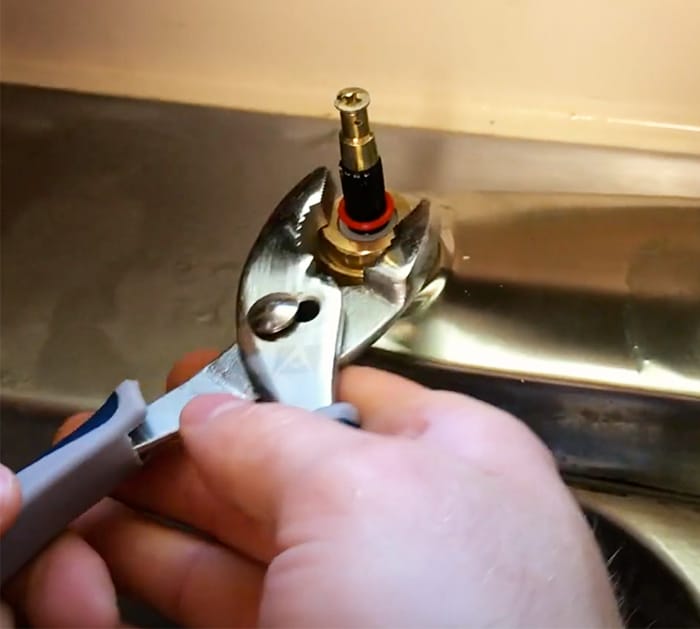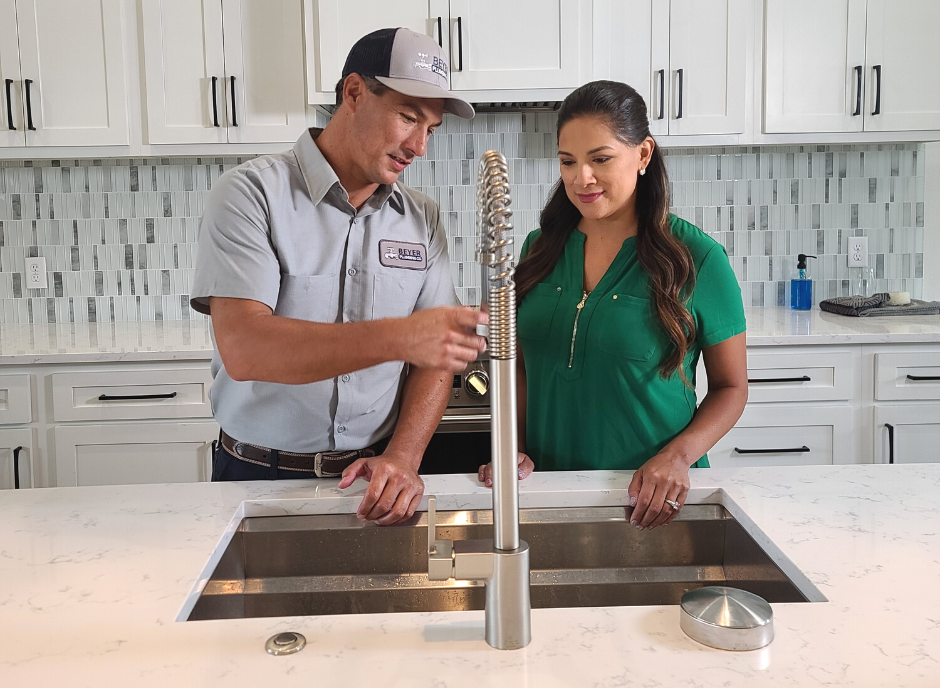How It's Essential to Deal with a Faulty Faucet
How It's Essential to Deal with a Faulty Faucet
Blog Article
Just how do you really feel when it comes to Water Dripping from Faucet: Why and How to Fix?

Dripping faucets may feel like a small trouble, yet their influence surpasses just the inconvenience of the sound. From drainage to incurring unnecessary economic expenses and health and wellness dangers, ignoring a trickling faucet can cause various repercussions. In this article, we'll look into why it's crucial to address this typical family issue quickly and properly.
Wastage of Water
Environmental Effect
Dripping faucets contribute dramatically to water wastage. According to the Environmental Protection Agency (EPA), a single tap leaking at one drip per secondly can lose more than 3,000 gallons of water annually. This not only stress water resources yet additionally influences environments and wild animals dependent on them.
Financial Expenses
Increased Water Bills
Beyond the environmental impact, dripping faucets can blow up water costs significantly. The accumulated wastefulness over time translates into higher utility costs, which might have been avoided with timely fixings.
Potential Building Damages
Furthermore, extended leaking can cause harm to fixtures and surfaces surrounding the tap. Water buildup can cause discoloration, deterioration, and even structural problems if left unattended, causing added repair service expenses.
Health Concerns
Mold And Mildew and Mildew Development
The continuous presence of dampness from a leaking tap produces a perfect setting for mold and mold growth. These fungis not only compromise interior air quality yet also present health dangers, particularly for individuals with respiratory system conditions or allergies.
Waterborne Conditions
Stationary water in dripping taps can become a breeding place for microorganisms and other microorganisms, boosting the threat of waterborne diseases. Contaminants such as Legionella bacteria flourish in stationary water, potentially bring about significant health problems when consumed or breathed in.
Do it yourself vs. Expert Fixing
Pros and Cons of Do It Yourself Fixing
While some might try to take care of a leaking faucet themselves, do it yourself repair work come with their very own collection of difficulties. Without proper knowledge and devices, DIY attempts can aggravate the problem or lead to insufficient repair work, prolonging the trouble.
Advantages of Employing a Specialist Plumber
Employing an expert plumber makes certain that the underlying source of the trickling faucet is attended to properly. Plumbing technicians have the experience and equipment to diagnose and repair faucet issues efficiently, conserving time and minimizing the risk of more damages.
Step-by-Step Guide to Fixing a Dripping Faucet
Tools Called for
Prior to attempting to deal with a trickling faucet, collect the needed tools, consisting of an adjustable wrench, screwdrivers, replacement components (such as washers or cartridges), and plumber's tape.
Common Tap Issues and Their Solutions
Determine the sort of faucet and the details problem creating the drip. Common issues include worn-out washing machines, corroded valve seats, or damaged O-rings. Describe producer directions or on-line tutorials for step-by-step assistance on fixings.
Preventive Measures
Routine Maintenance Tips
To avoid trickling taps, execute regular upkeep such as cleaning aerators, examining for leaks, and replacing worn-out parts quickly. Furthermore, think about setting up water-saving gadgets or upgrading to extra reliable components.
Relevance of Prompt Fixes
Resolving leaking faucets as soon as they're seen protects against additional water wastage and prospective damage, inevitably conserving both water and money in the future.
Effect On Residential Property Value
Assumption of Well-Maintained Residential Property
Maintaining a property in good condition, consisting of attending to upkeep concerns like leaking faucets, boosts its perceived worth and charm amongst possible purchasers or occupants.
Impact on Resale Worth
Residences with properly maintained plumbing components, including faucets, command higher resale values in the property market. Resolving dripping faucets can contribute to a favorable perception throughout residential or commercial property assessments and settlements.
Ecological Obligation
Private Contribution to Conservation
Taking responsibility for fixing dripping taps lines up with wider efforts towards water preservation and environmental sustainability. Every person's activities collectively make a considerable impact on maintaining valuable resources.
Lasting Living Practices
By prioritizing punctual repair services and adopting water-saving routines, individuals add to lasting living practices that profit both existing and future generations.
Final thought
Resolving a dripping tap goes beyond simple ease; it's a crucial action toward preserving water, minimizing financial costs, and guarding health and wellness and residential or commercial property. Whether through do it yourself repair work or specialist support, taking action to take care of dripping taps is a small yet impactful method to advertise responsible stewardship of resources and add to a healthier, a lot more lasting future.
Most Common Reasons for a Leaky Faucet and How to Stop the Drip
Whether it’s your kitchen faucet leaking or a bathroom faucet leaking, one leaky faucet can waste anywhere from three to 30 gallons of water every single day. If the constant drip-drip-drip doesn’t get your attention, your water bill will. The good news is that, by following a few simple steps, chances are pretty good you can fix the problem yourself.
Why is it dripping?
Before you start taking things apart, let’s break down some of the most common causes of a leaky faucet.
Bad O-ring.
A cartridge is a valve that controls the flow of water into the faucet spout. On cartridge faucets there’s an O-ring—the little disc attached to the stem screw that holds the faucet handle in place. If it’s loose or worn-out, it can cause your sink handle to leak. Of course, the cartridge itself could be worn out. If that’s the case, make sure you replace it with the exact same kind.
Corroded valve seat.
The valve seat connects the faucet and the spout. If the leak seems to be coming from the spout, it might be because a buildup of water sediment has corroded the valve seat.
Worn-out washers or seals.
A leaky spout could be caused by a bad washer that rests against the valve seat. It’s just a matter of time before friction takes its toll. It could also be the wrong size washer or one that’s been installed incorrectly. Water sediments can also corrode inlet and outlet seals.
Water pressure.
If the faucet only drips now and then, or when you turn the handles a certain way, you should probably check your home’s water pressure.
Loose or broken parts.
The adjusting ring and packing nuts in the stream screw can become loose over time, causing your sink handle to leak. Try tightening or replacing the packing nut. If the leak is coming from the pipes underneath the sink, you probably have a broken pipe or fitting. If that’s the case, you should definitely call a plumber.
Know your faucet.
Faucets come in a variety of types. Each one has its own assembly—and its own possible causes of leaks. Learning about the four most common kinds of faucets will help you know how to take them apart and make any repairs.
How to stop a leaky faucet
Fixing that leaky faucet doesn’t have to take a lot of time, money, or expertise. It’s usually a simple matter of replacing a worn-out washer or gasket, a loose O ring, or another part. Chances are really good you can do this yourself if you follow these simple steps.
Shut off the water.
Before you tackle the faucet, cut off the water supply to the sink. There should be one valve for hot and one for cold. Hand-turn them clockwise with your hands till they close. If there are no valves under the sink, head to the basement and shut off the main water supply to the house. Then turn on the faucet until it empties out the water that’s still in the line and you’re ready to start. It’s a good idea to cover the sink drain with a plug or a rag so you don’t lose any small pieces and parts while you’re working.

We had been shown that article on Should I Repair or Replace a Leaky Faucet? from a friend on another site. Enjoyed our article? Please share it. Let somebody else find it. Many thanks for your time spent reading it.
Report this page